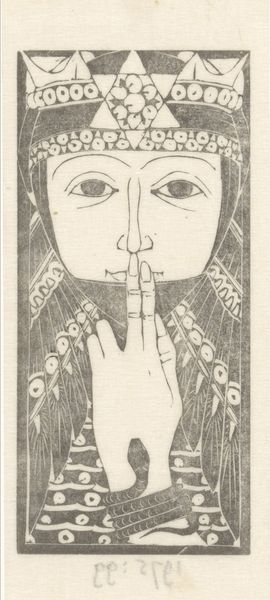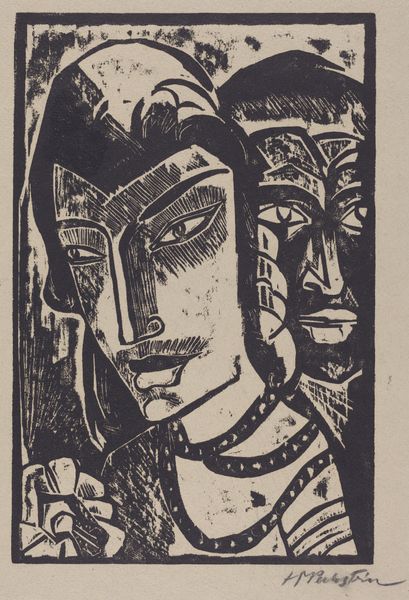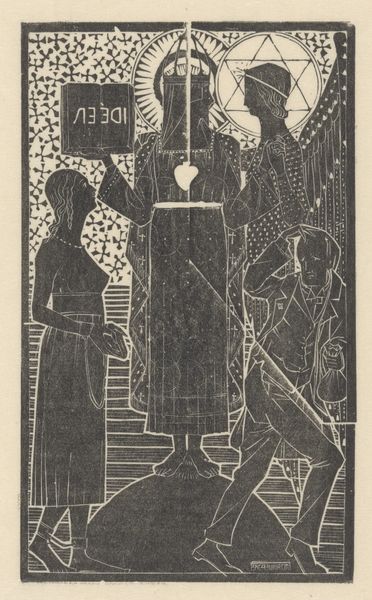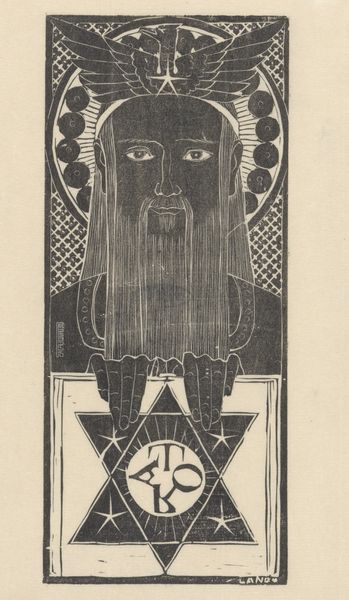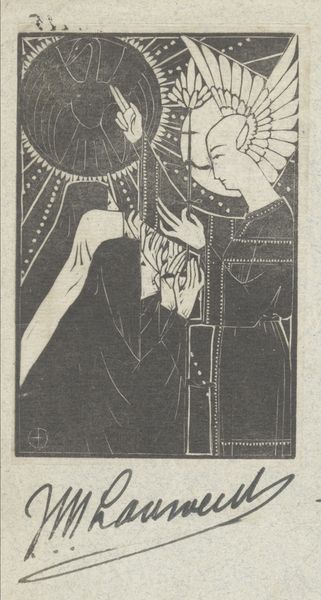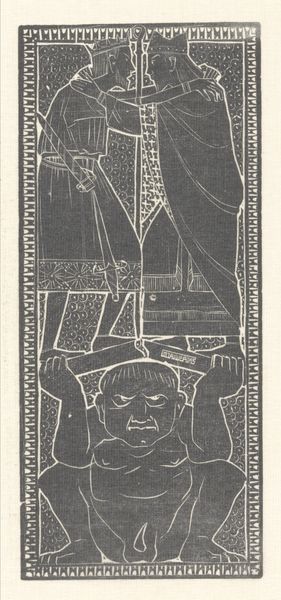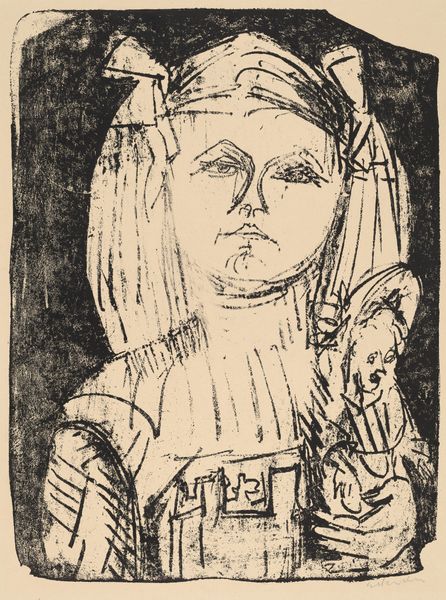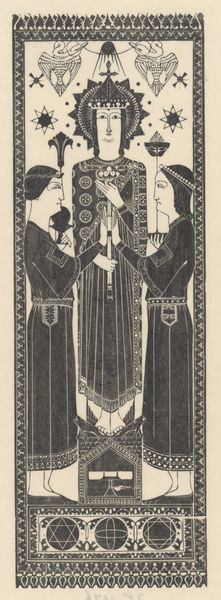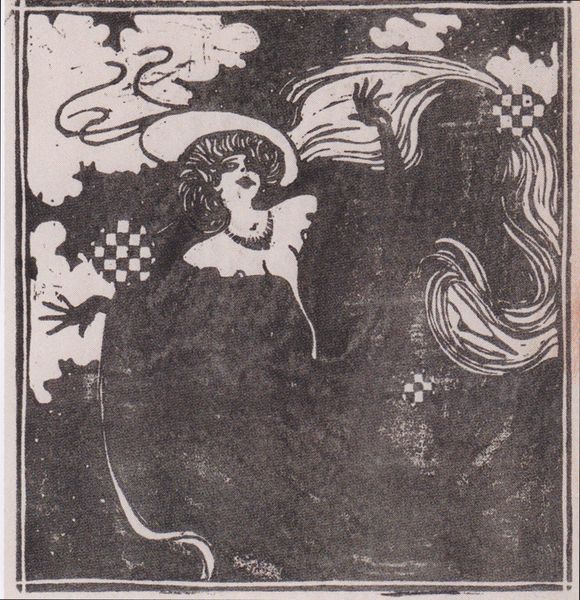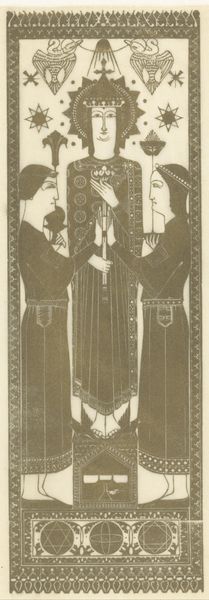
print, woodcut
#
portrait
#
medieval
# print
#
figuration
#
woodcut
#
line
#
symbolism
Dimensions: height 135 mm, width 106 mm
Copyright: Rijks Museum: Open Domain
Curator: Here we have "Geestelijke met masker" – that translates to "Cleric with Mask" – a woodcut print made sometime between 1894 and 1935 by Mathieu Lauweriks. The strong lines immediately strike you, don’t they? Editor: Absolutely. There's a potent duality at play here, a stark contrast between the black-robed figure and the ghostly white mask. It's incredibly evocative; makes me think of inner turmoil and hidden identities. Curator: Lauweriks was working during a fascinating period when the church held considerable societal sway, especially in education and politics. This print reflects, perhaps, anxieties about religious authority. Woodcuts were a favored medium for social commentary because of their affordability and reproducibility. Editor: The mask, to me, represents an idealized self, almost like an icon itself with that prominent symbol above the brow. Yet it's held in the cleric’s hand, suggesting a detachment from true, spiritual self. It almost implies critique. Curator: And the cleric’s gaze – he’s not looking at the mask. Is he turning away from this idealized vision? Lauweriks, of course, was deeply interested in symbolism. Remember, too, that while the print gestures toward the Medieval style, its actual creation falls squarely within the rise of modernist critiques of institutions. Editor: It makes you wonder if that darker area of the print – the black robes, the shadow, if you will – are where Lauweriks locates truth, almost in opposition to that prescribed role the clergy were forced to follow. The negative space creates this striking composition that only elevates the contrast in thematic tone. Curator: Exactly! What appears simple in line and form reveals deeper anxieties about identity and representation. This artwork, despite its smaller scale, raises pertinent questions about the church's public image and its potential masking of inner turmoil during a period of transition. Editor: This really made me contemplate the stories we tell ourselves, and those imposed on us. I wonder how viewers in different times interpreted such layered visual commentary. Curator: I agree. The print acts as a silent observer, archiving centuries of human questions regarding our own sense of being in this world.
Comments
No comments
Be the first to comment and join the conversation on the ultimate creative platform.
